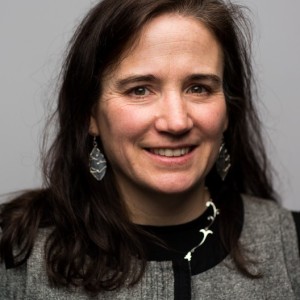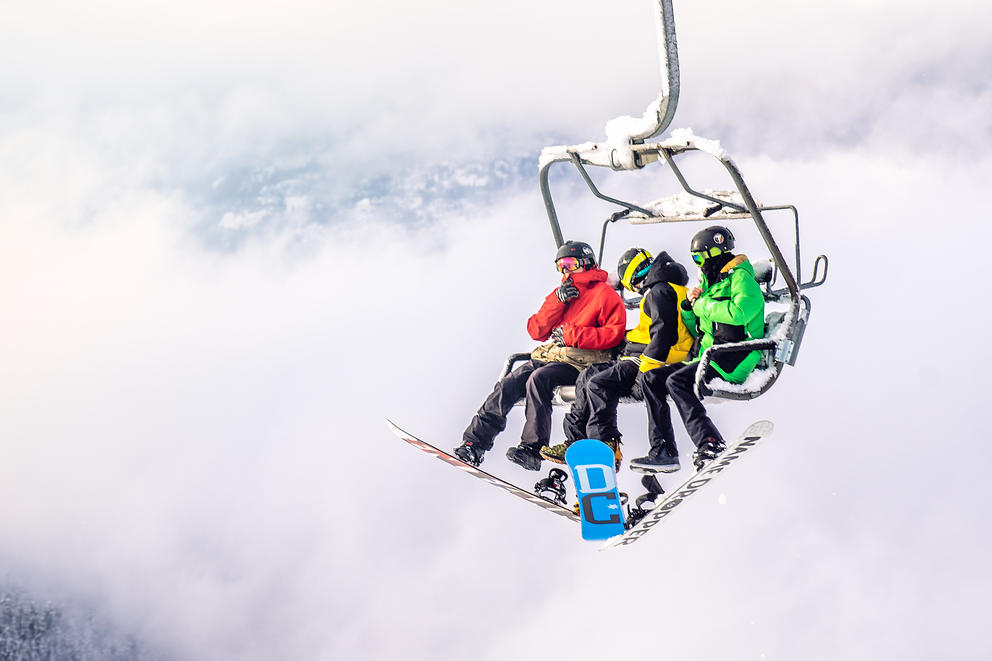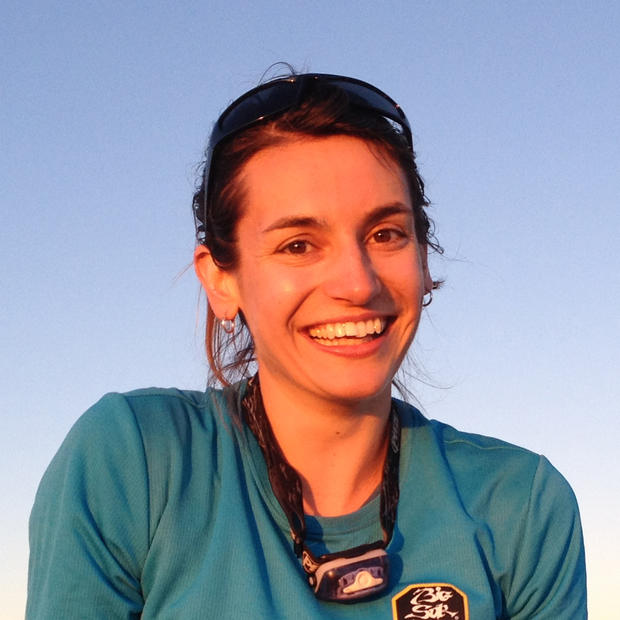Spirits were high at Mount Baker Ski Area last Saturday as skiers and snowboarders trickled in to the resort’s White Salmon Lodge after a day on the slopes. The day was bright and clear and the mountain was still laden with the snow from December’s winter storms. But the après-ski fare was a little gloomier than you might expect: a talk about a phenomenon that has potential to kill off the very activity they came here for.
It was the first of a three-part lecture series by University of Washington scientists about global warming in the Pacific Northwest. The brainchild of UW ocean scientist and longtime Baker skier Sarah Myhre, the “1.5 Degrees Series,” named for the target set at the recent United Nations climate summit in Paris to limit warming to just 1.5°C, aims to bring climate science directly to people who have a vested interest in fighting it.

We will all feel the effects of climate change in some shape or form but, like oyster farms, Myhre says the ski industry is positioned to take a head-on hit from our greenhouse gas habit: “Oysters are to ocean acidification as ski areas are to temperature and precipitation changes."
And ailing resorts could have an even bigger economic impact than struggling oyster farms. According to the 2009-2010 season data, there were 1,761,851 visits to Washington ski resorts. Winter tourism created 6,039 jobs in the state and garnered an added value of $347 million -- and skiing is the biggest portion of that. By comparison, according to the 2010 data, shellfish farming in Washington created 2,710 jobs and a total revenue of $90.2 million.
But those winter tourism numbers come from a particularly good season. In a low snow year, resort visitation drops by an average of 28 percent. Last year, warm temperatures resulted in a February snowpack of just 18 percent of normal in the southern Cascades, forcing Washington’s ski resorts to close earlier than usual, if they opened at all.
“If we do nothing (to slow climate change), by the end of the century almost every winter will be warmer than we have ever experienced,” said Cecilia Bitz, a climate and ice scientist at UW and last Saturday’s featured speaker. “We’ll see 90 percent of the years worse than last year.” Even if we hit the 1.5°C target, Bitz said, the temperatures we saw last winter will become the new norm.
Given how tough last season was on Washington’s ski areas, will this mean the end of the sport in the state? Not necessarily. That’s because how much snow falls here, and whether it stays, depends on the relationship between temperature, winds, and precipitation. And, for us, those dynamics are directly influenced by our proximity to the Pacific.

The lack of snow in 2014-2015 was caused by an unusually warm ocean, Bitz explained in an email. This meant that as the wind flowed to the mountains from the ocean, much of the precipitation fell as rain instead of snow.
Climate change, however, is expected to cause much more warming at land than at sea. Our maritime climate will have a buffering effect: In a “normal” year, the wet western air will be comparatively cool, and so there is a higher chance that at least some winter precipitation will continue to fall as snow instead of rain, especially at higher elevations, where temperatures are lower and precipitation is higher.
“Because we live in a maritime climate, our snow is more protected,” Bitz said.
More, that is, than other parts of the country. The maritime buffer won’t make our snow invincible, and snow at lower elevations will be the first to go. According to a study from the U.S. Department of Agriculture, about one third of the area including the Mount Baker-Snoqualmie National Forest, Okanogan-Wenatchee National Forest, North Cascades National Park and Mount Rainier National Park will experience little change in snowpack by the 2040s. Snowpack will shrink in the other two-thirds of the area (minus a small corner in the northwest part of the complex, which may experience a slight increase). But that snowy third will have an average elevation of 5,709 feet. That’s higher than the base areas of any of Washington’s big ski resorts. Alpental’s base is at 3,140 feet, Stevens Pass is 4,061 feet, Crystal Mountain is 4,400 feet, and Baker is 3,500 feet.
So while Bitz joked, “I predict that skiers from Colorado will be coming to ski here over the next century,” chances are good they’ll be hoofing it up into the backcountry. It's tough to run a ski resort when the snowline is a thousand feet or more above the lodge.
Of course, while the future of our powder may be a top concern for skiers, climate change will affect more than just snow. For the next two talks, the 1.5 Degrees Series will broaden its scope: This Saturday, January 16, UW aquatic and fisheries scientist Daniel Schindler will talk about how our salmon populations will fare, and on January 23, research meteorologist will help to demystify El Niño.
“Climate scientists need to talk to real people, so they can see how relevant this information is to their lifestyles,” Myhre said. Starting with this: If you like to ski, now might be the time to make the most of it.



